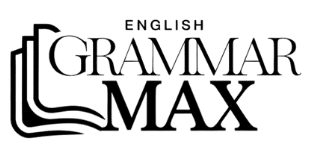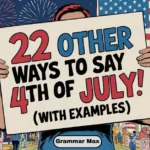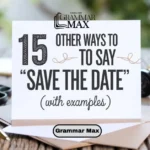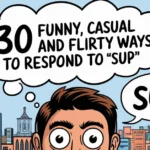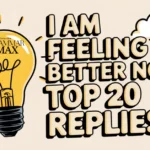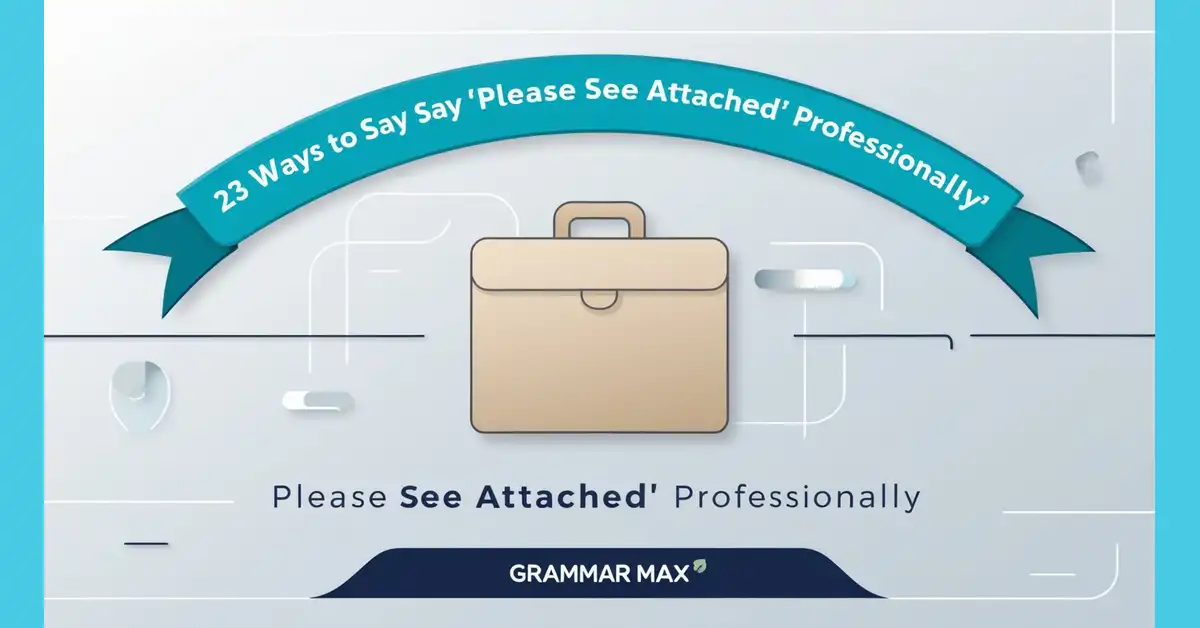In professional communication, clarity and professionalism are key. When sending an email or document, especially in a business setting, it’s essential to politely reference any attachments you’ve included. However, the phrase “Please see attached” can get repetitive, and diversifying your wording can improve the readability and tone of your messages. Below, we’ll explore 23 ways to say “Please see attached” in a professional context, providing best-use scenarios for each.
Alternative ways to say “Please See Attached”
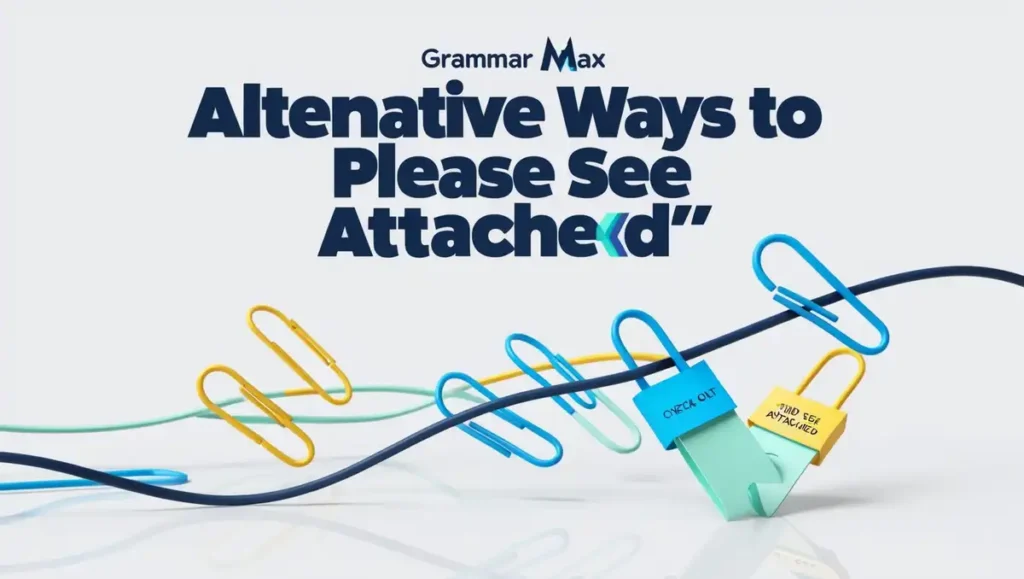
Here is 23 alternative ways to say “Please see attached” professionally:
- Please Find the Attached
- See Attached
- Please See Attached
- Attached You Will Find
- Enclosed Please Find
- For Your Convenience, I’ve Attached
- Attached Herewith
- The Document You Requested Is Attached
- Kindly Refer to the Attached Document
- The Attached Document Outlines
- Attached for Your Review
- Attached Herein
- Please See the Documentation Attached
- For Further Details, See Attached
- Kindly Review the Attached
- I’ve Included
- You’ll Find the Attachment
- Attached, Please Find
- As Requested, I Have Attached
- Please Refer to the Attached
- The Attached File Contains
- Attached for Your Reference
- For Your Review, I’ve Attached
1. Please Find the Attached
Best Use: This is a formal and commonly used phrase in business communication. It works well when sending important documents, such as contracts, proposals, or legal paperwork.
Example:
“Dear Ms. Evans,
Please find the attached proposal for your review. If you have any questions or need further information, feel free to reach out.
Best regards,
John“
Scenario: Sending a proposal to a client.
2. See Attached
Best Use: Short, straightforward, and professional. Ideal for when you’re communicating informally but still want to maintain professionalism.
Example:
“Hi Laura,
See attached for the latest report. Let me know if you need any changes.
Thanks,
Tom“
Scenario: Sharing a quick report or document with a colleague.
3. Please See Attached
Best Use: This is a polite and simple phrase commonly used in both formal and informal contexts. It’s clear, concise, and professional.
Example:
“Dear Mr. Johnson,
Please see attached for the updated project timeline. I hope it meets your expectations.
Best regards,
Sarah“
Scenario: Sending an updated timeline or document after feedback.
4. Attached You Will Find
Best Use: Suitable for when you want to sound professional, but also more conversational. It is often used in client communications or internal emails.
Example:
“Hi Peter,
Attached you will find the financial breakdown for this quarter. Let me know if you need further details.
Best,
Emily“
Scenario: Sending a financial breakdown or report to a team member.
5. Enclosed Please Find
Best Use: Typically used in formal, written correspondence, such as letters or legal documents. It adds a touch of elegance and professionalism.
Example:
“Dear Dr. Smith,
Enclosed please find the contract for your signature. Kindly review the attached and let us know if there are any issues.
Sincerely,
Mark“
Scenario: Sending a legal document or contract to a client.
6. For Your Convenience, I’ve Attached
Best Use: This phrase is polite and customer-centric, indicating that you’re trying to make things easier for the recipient. It’s perfect when you’re handling customer service or client-related queries.
Example:
“Dear Ms. Carter,
For your convenience, I’ve attached the latest user guide. Kindly refer to section 4 for troubleshooting tips.
Best regards,
Rachel“
Scenario: Sending a user guide to a customer.
7. Attached Herewith
Best Use: A highly formal phrase, often used in legal or contractual documents. This phrase is appropriate when communicating in very formal settings, such as between lawyers or with government agencies.
Example:
“Dear Mr. Lewis,
Attached herewith is the finalized agreement for your records. Please see the documentation and revert with any feedback.
Regards,
Michael“
Scenario: Sharing a finalized agreement or contract.
8. The Document You Requested Is Attached
Best Use: Use this phrase when you’re responding to a specific request for a document. It’s polite and indicates that you’re fulfilling the recipient’s request.
Example:
“Hi David,
The document you requested is attached. Please see attached and let me know if you need anything else.
Best regards,
Sandra“
Scenario: Responding to a document request from a colleague or client.
9. Kindly Refer to the Attached Document
Best Use: This phrase works well when you want the recipient to focus on specific information in the attachment. It’s polite yet direct.
Example:
“Dear Mr. Green,
Kindly refer to the attached document for a detailed breakdown of the project costs. Feel free to reach out if anything is unclear.
Sincerely,
Lily“
Scenario: Sending a cost breakdown or any other detailed document that needs review.
10. The Attached Document Outlines
Best Use: This is a great phrase when the document contains detailed or outlined information. It’s particularly useful for proposals, reports, or project summaries.
Example:
“Dear Mrs. Brown,
The attached document outlines the key deliverables for the upcoming project. Please review and confirm if everything is in order.
Best,
Alex“
Scenario: Sending a project deliverables document to a client or supervisor.
11. Attached for Your Review
Best Use: A direct yet polite way to ask someone to review a document. It shows a balance of professionalism and clarity.
Example:
“Hi Jenny,
Attached for your review is the updated marketing plan. Let me know your thoughts.
Thanks,
Chris“
Scenario: Sending an updated marketing plan to a colleague for feedback.
12. Attached Herein
Best Use: This formal phrase is suitable for official or formal communications where the attachment is crucial to the conversation.
Example:
“Dear Ms. Miller,
Attached herein is the final version of the contract. Please see attached for your approval.
Best regards,
James“
Scenario: Sending a final contract to a client.
13. Please See the Documentation Attached
Best Use: Use this phrase when you’re referencing a detailed or lengthy document that needs careful review. It’s professional and clear.
Example:
“Dear Mr. Watson,
Please see the documentation attached for the full project scope. Let me know if you have any questions.
Kind regards,
Helen“
Scenario: Sending a detailed project scope document.
14. For Further Details, See Attached
Best Use: This is a helpful phrase when you’re providing a brief overview in the body of the email and directing the recipient to the attachment for further information.
Example:
“Hi Mike,
I’ve summarized the key points below. For further details, see attached.
Best,
Olivia“
Scenario: Sending a summary email with further details in the attachment.
15. Kindly Review the Attached
Best Use: This phrase is polite and directs the recipient to review the attachment without sounding too forceful. It’s great for documents that require feedback or approval.
Example:
“Dear Mr. Johnson,
Kindly review the attached draft of the proposal. Let me know if any revisions are required.
Sincerely,
Emma“
Scenario: Sending a draft proposal for feedback or approval.
16. I’ve Included
Best Use: This is a more casual and conversational approach, suitable for colleagues or clients with whom you have a closer, more informal relationship.
Example:
“Hey Sarah,
I’ve included the meeting notes from last week’s discussion. Feel free to reach out if anything needs clarification.
Best,
David“
Scenario: Sharing meeting notes or internal documents with colleagues.
17. You’ll Find the Attachment
Best Use: Use this phrase when you want to maintain a professional tone while keeping your message short and concise.
Example:
“Dear Mr. Adams,
You’ll find the attachment with the latest sales data for your review. Let me know if any further adjustments are needed.
Best regards,
Karen“
Scenario: Sending sales data or updates to a manager or client.
18. Attached, Please Find
Best Use: This is another formal option suitable for official documents like contracts, agreements, or financial reports.
Example:
“Dear Mrs. Parker,
Attached, please find the financial summary for the third quarter. I look forward to your feedback.
Sincerely,
Rob“
Scenario: Sharing a financial report with stakeholders or management.
19. As Requested, I Have Attached
Best Use: Use this when responding to a direct request for a document or file. It shows that you’re fulfilling a specific request in a professional manner.
Example:
“Hi James,
As requested, I have attached the signed agreement for your records. Please let me know if anything else is needed.
Best regards,
Sophie“
Scenario: Sending documents or files that have been requested in a previous conversation.
20. Please Refer to the Attached
Best Use: This phrase is ideal for pointing out specific details in the attachment. It’s polite and invites the recipient to review the document thoroughly.
Example:
“Dear Mr. Collins,
Please refer to the attached for a detailed breakdown of the event schedule. I hope it meets your expectations.
Best,
Maria“
Scenario: Sending an event schedule or project timeline.
21. The Attached File Contains
Best Use: This phrase is perfect when you want to briefly explain the content of the attachment. It adds a helpful context for the recipient.
Example:
“Dear Susan,
The attached file contains the final product specifications for your review. Please let me know if you need further adjustments.
Best regards,
Leo“
Scenario: Sharing product specifications with a client or vendor.
22. Attached for Your Reference
Best Use: Use this phrase when you’re sending a document that’s intended to provide supporting information or context.
Example:
“Hi Emma,
Attached for your reference is the previous version of the marketing plan. This might be useful for comparison with the new draft.
Best,
Josh“
Scenario: Sending previous versions of a document for reference.
23. For Your Review, I’ve Attached
Best Use: Ideal for when you expect feedback or approval from the recipient. This phrase emphasizes that the document is provided for their review.
Example:
“Dear Mr. Baker,
For your review, I’ve attached the proposed changes to the project scope. Kindly let me know your thoughts.
Best regards,
Claire“
Scenario: Sending a revised project scope for approval or feedback.
When to Use These Phrases ?
Use these phrases when sharing important documents, files, or attachments in emails or professional correspondence. Select the appropriate phrase based on the level of formality, relationship with the recipient, and context of the communication. Whether you’re sending reports, contracts, or proposals, varying your language enhances clarity and maintains professionalism.
Is it Professionally to Say “Please See Attached”
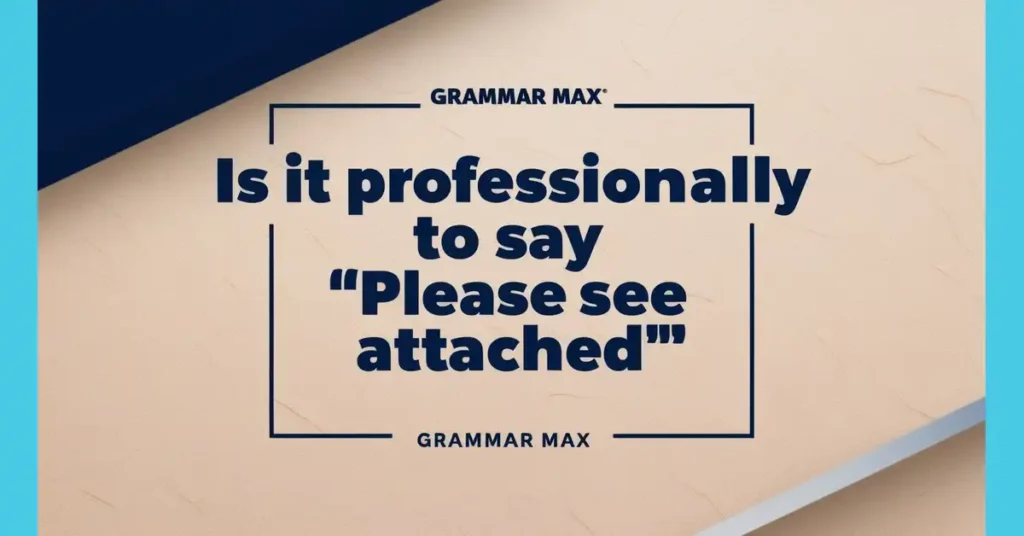
Yes, it is professional to say “Please see attached” in most business and formal communications. This phrase is widely accepted and understood, offering a clear and polite way to direct recipients to an attachment. However, to avoid repetition and enhance your email’s tone, consider using alternatives based on the context and relationship with the recipient. Varying your language can show attention to detail and ensure your messages remain engaging and professional. It’s important to choose the right level of formality for your audience.
Frequently Asked Question
What is another way to say “please see attached”?
You can say “Attached for your review” or “Enclosed please find” as professional alternatives to “please see attached.”
What can I use instead of please find attached?
Use “The document you requested is attached” or “Attached herewith” for a more polished alternative to “please find attached.”
How do you say “please find attached professionally”?
You can say “Attached herein is the report” or “For your review, I’ve attached the document” to sound more professional.
How do I say “please see attachments” in an email?
You can say “Please refer to the attached documents” or “Attached, you will find the files requested” for a formal tone.
Conclusion
In conclusion, using varied phrases to reference attachments in emails is crucial for maintaining professionalism and engagement. Whether you’re communicating with clients, colleagues, or management, selecting the appropriate phrase based on the context and relationship ensures your message is clear and polite. By incorporating different expressions like “Attached for your review” or “Enclosed please find,” you enhance the tone of your communication while avoiding repetition. Ultimately, adapting your language helps you present yourself as thoughtful and professional, making your emails more effective.

William Henry is a writer for Grammar Max, a blog that focuses on synonyms and phrases. He loves exploring the quirks of the English language and enjoys helping readers improve their vocabulary. William’s articles are easy to read, fun, and full of useful tips for anyone looking to better understand and use English. Whether you’re a student, a professional, or just someone interested in language, William’s writing on Grammar Max makes learning about words and their meanings simple and enjoyable.
